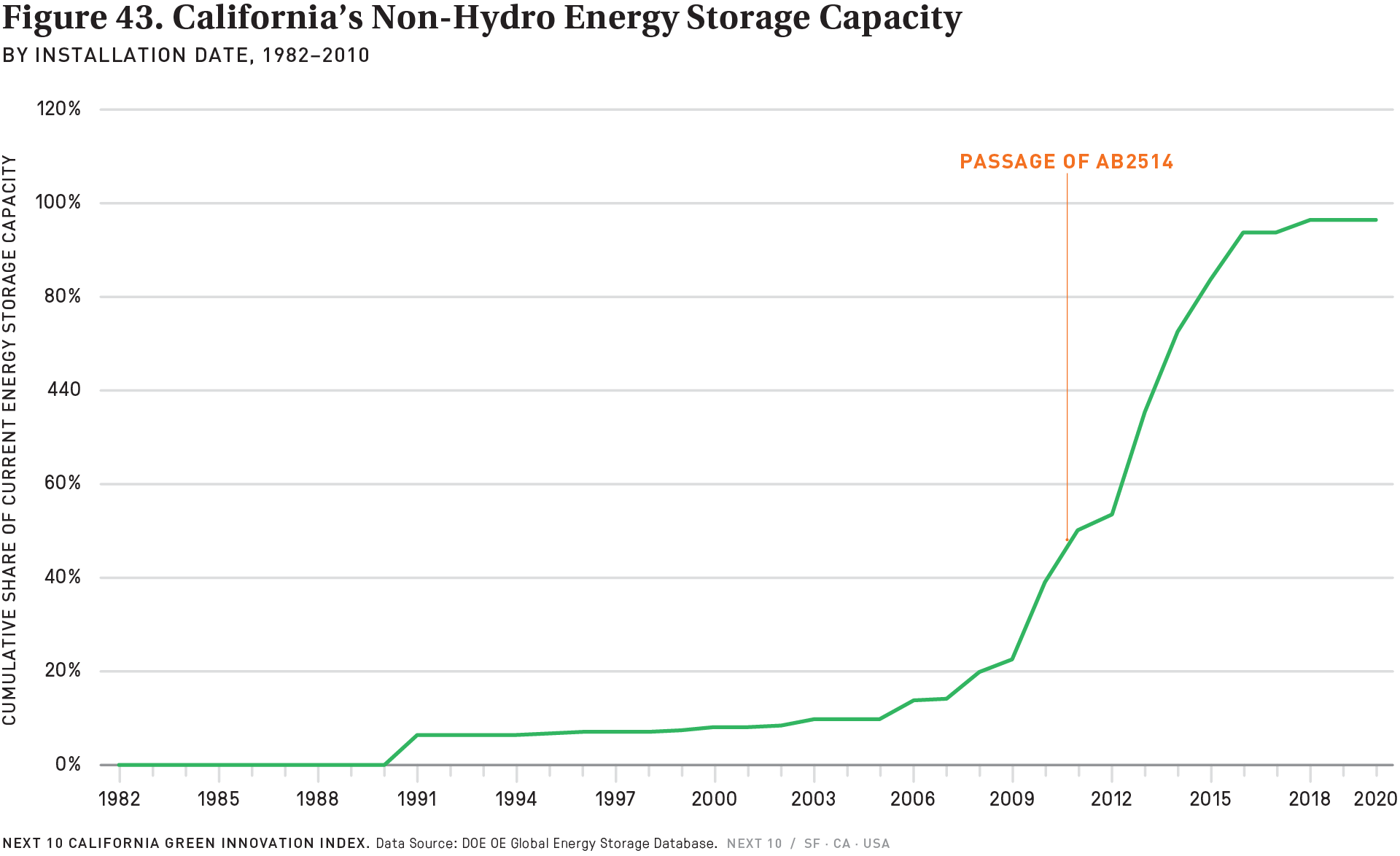Highlight
- A point of emphasis for California’s lawmakers, has been to update the state’s energy storage system so that it is not so dependent on large hydro-electric projects. New technologies such as compressed-air energy storage (CAES), battery-based energy storage, thermal energy storage, geological hydrogen storage, and fuel cells, are more versatile involve fewer environmental tradeoffs. In 2010, the state was the first to mandate energy storage expansion, when it directed the California Public Utilities Commission (CPUC) to require private utilities to acquire increase energy storage by 2020. That directive explicitly excluded hydroelectric storage technology from eligibility.95 By all accounts the efforts has been a success. Private utilities have fulfilled CPUC’s 1325 MW target by dramatically expanding newer forms of storage. Per analysis of the Department of Energy’s Energy Storage Database, more than 75 percent of the state’s non-hydro storage capacity (measured as rated power) came online since the passage of the bill. The bill also set a precedent for similar efforts in Colorado, Massachusetts, Nevada, New York, New Jersey and Oregon.96
95 “AB-2514: energy storage systems.” California State Legislature. Chaptered September 29, 2010. Available at: https://leginfo.legislature.ca.gov/faces/billNavClient.xhtml?bill_id=200920100AB2514
96 Shuai, X., et. al. Behind-the-meter energy storage in China: Lessons from California’s approach. Wiley Interdisciplinary Reviews. January 19, 2021. Available at: https://wires.onlinelibrary.wiley.com/doi/full/10.1002/wene.394
More About
Renewable Energy
Related Content
